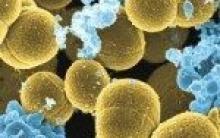For more than 30 years in the USSR, then in Russia, liquefied and compressed gases have been used in the national economy. During this time, a rather difficult path has been passed in organizing the accounting of liquefied gases, developing technologies for their pumping, measurement, storage, and transportation.
From burning to recognition
Historically, the potential of gas as an energy source has been underestimated in our country. Not seeing economically justified areas of application, oil producers tried to get rid of light fractions of hydrocarbons and burned them uselessly. In 1946, the separation of the gas industry into an independent industry revolutionized the situation. The volume of production of this type of hydrocarbons has increased sharply, as has the ratio in Russia’s fuel balance.
When scientists and engineers learned to liquefy gases, it became possible to build gas-liquefaction enterprises and deliver blue fuel to remote areas not equipped with a gas pipeline, and use it in every home, as automobile fuel, in production, and also export it for hard currency.
What are liquefied petroleum gases
They are divided into two groups:
- Liquefied hydrocarbon gases (LPG) are a mixture of chemical compounds consisting mainly of hydrogen and carbon with different molecular structures, that is, a mixture of hydrocarbons of different molecular weights and different structures.
- Broad fractions of light hydrocarbons (NGL) - include mostly mixtures of light hydrocarbons of hexane (C6) and ethane (C2) fractions. Their typical composition: ethane 2-5%, liquefied gas fractions C4-C5 40-85%, hexane fraction C6 15-30%, the pentane fraction accounts for the remainder.

Liquefied gas: propane, butane
In the gas industry, it is LPG that is used on an industrial scale. Their main components are propane and butane. They also contain lighter hydrocarbons (methane and ethane) and heavier ones (pentane) as impurities. All of the listed components are saturated hydrocarbons. LPG may also contain unsaturated hydrocarbons: ethylene, propylene, butylene. Butane-butylenes can be present in the form of isomeric compounds (isobutane and isobutylene).
Liquefaction technologies
They learned to liquefy gases at the beginning of the 20th century: in 1913, the Nobel Prize was awarded to the Dutchman K. O. Heike for the liquefaction of helium. Some gases are brought to a liquid state by simple cooling without additional conditions. However, most hydrocarbon “industrial” gases (carbon dioxide, ethane, ammonia, butane, propane) are liquefied under pressure.
The production of liquefied gas is carried out at gas liquefaction plants located either near hydrocarbon fields or along the path of gas pipelines near large transport hubs. Liquefied (or compressed) natural gas can be easily transported by road, rail or water transport to the end user, where it can be stored, then converted back into a gaseous state and supplied to the gas supply network.

Special equipment
In order to liquefy gases, special installations are used. They significantly reduce the volume of blue fuel and increase energy density. With their help, it is possible to carry out various methods of processing hydrocarbons, depending on the subsequent application, the properties of the feedstock and environmental conditions.
Liquefaction and compression plants are designed for gas processing and have a block (modular) design or are completely containerized. Thanks to regasification stations, it becomes possible to provide even the most remote regions with cheap natural fuel. The regasification system also allows you to store natural gas and supply the required quantity depending on demand (for example, during periods of peak demand).

Most of the various gases in a liquefied state find practical application:
- Liquid chlorine is used to disinfect and bleach fabrics and is used as a chemical weapon.
- Oxygen - in medical institutions for patients with breathing problems.
- Nitrogen - in cryosurgery, for freezing organic tissues.
- Hydrogen is like jet fuel. Recently, cars powered by hydrogen engines have appeared.
- Argon - in industry for metal cutting and plasma welding.
It is also possible to liquefy hydrocarbon gases, the most popular of which are propane and butane (n-butane, isobutane):
- Propane (C3H8) is a substance of organic origin of the class of alkanes. Obtained from natural gas and by cracking petroleum products. A colorless, odorless gas, slightly soluble in water. Used as fuel, for the synthesis of polypropylene, the production of solvents, in the food industry (additive E944).
- Butane (C4H10), a class of alkanes. A colorless, odorless, flammable gas, easily liquefied. Obtained from gas condensate, petroleum gas (up to 12%), during cracking of petroleum products. Used as fuel in the chemical industry, in refrigerators as a refrigerant, in the food industry (additive E943).
Characteristics of LPG
The main advantage of LPG is the possibility of their existence at ambient temperatures and moderate pressures in both liquid and gaseous states. In the liquid state they are easily processed, stored and transported; in the gaseous state they have better combustion characteristics.
The state of hydrocarbon systems is determined by the combination of influences of various factors, so for a complete characterization it is necessary to know all the parameters. The main ones that can be directly measured and influence flow regimes include: pressure, temperature, density, viscosity, concentration of components, phase relationships.
The system is in equilibrium if all parameters remain unchanged. In this state, no visible qualitative and quantitative metamorphoses occur in the system. A change in at least one parameter disrupts the equilibrium state of the system, causing one or another process.

Properties
When liquefied gases are stored and transported, their state of aggregation changes: part of the substance evaporates, transforming into a gaseous state, while part condenses and turns into a liquid. This property of liquefied gases is one of the determining ones in the design of storage and distribution systems. When boiling liquid is taken from reservoirs and transported through a pipeline, part of the liquid evaporates due to pressure loss, a two-phase flow is formed, the vapor pressure of which depends on the temperature of the flow, which is lower than the temperature in the reservoir. If the movement of a two-phase liquid through the pipeline stops, the pressure at all points is equalized and becomes equal to the vapor pressure.
The main component of an autonomous gas supply system is a propane-butane mixture. However, many do not understand Why do they mix propane and butane?, because each gas can be used as an independent fuel. However, in some regions of Russia, these hydrocarbons cannot be used in their pure form for gasification of facilities, which is due to their physicochemical properties and climatic factors.
Properties of LPG
To understand why propane is mixed with butane, you need to know the characteristics of each component, including their interaction with the external environment. From a molecular structure point of view, they are hydrocarbon compounds that can be stored in a liquid state, which greatly simplifies transportation and operation.
One of the conditions for the formation of liquid gas is high pressure, so it is stored in special tanks under a pressure of 16 bar. The second condition for the transition of hydrocarbon gases from one state to another is the external air temperature. Propane boils at -43°C, while the transformation from liquid to gaseous state in butane occurs at -0.5°C, which is the main difference between these hydrocarbons.
Table with some other properties of these gases
Additional information about the properties of liquefied hydrocarbon gas can be read in the article: propane-butane for a gas holder - properties and application features.
Why do they mix propane and butane in an autonomous gas supply system?
Considering the physicochemical characteristics of saturated hydrocarbons, their use largely depends on climatic conditions. Liquefied butane in its pure form will not work at subzero temperatures. Whereas the use of pure propane is contraindicated in hot climates, since high temperatures cause an excessive increase in pressure in the gas tank.
Since it is not practical to produce a separate grade of gas for each region, for the purpose of unification, GOST provides a mixture with a certain content of two components within the established standards. According to GOST 20448-90, the maximum butane content in this mixture should not exceed 60%, while for the northern regions and in the winter season the share of propane should be no less than 75%.

Percentage of gases at different times of the year
By the way, more articles from our blog about gasification are in this section.
Technological factor
In addition to the climate factor, there is a technological justification for why propane and butane are mixed. At oil refineries, during the processing of associated gases, propane and butane are produced in different quantities. Therefore, to optimize the raw material policy, these hydrocarbons are mixed together in a certain proportion. At the same time, regardless of the technology for producing liquefied hydrocarbon gas, the percentage of the two components must be within the limits established by GOST.
Pricing policy for LPG refueling
The cost of propane-butane depends on the content of the first (more expensive) component. Therefore, it is not surprising that the “winter” mixture for refueling an autonomous gas supply system will be more expensive than the “summer” one. However, if any company offers refueling at a price significantly lower than the market average, then its representative should ask the following questions:
- Why is the cost of LPG so low?
- What is the propane to butane ratio?
- How will this composition work in winter?
- Is appropriate technical documentation available?
- Can I contact the company if problems arise?

Be careful! A cheap mixture can then cost much more.
Some companies cheat by providing a “winter” mixture that does not comply with GOST. Therefore, the low cost of LPG should, at a minimum, alert the buyer.
To avoid problems with gasification of your home, contact the Promtekhgaz company, which has already proven its professionalism and reliability. This is evidenced by our good position in the market and the absence of negative feedback from customers.
A mixture of propane and butane has been used for a long time in many areas of industry, production and everyday life, this is due to the special properties of the mixture of these gases. Propane-butane is distinguished by its unique ability to transform from a liquid consistency to its gaseous form and vice versa. Moreover, to obtain the required state, it is not necessary to use any cryogenic units.
How to obtain propane-butane
Propane-butane is obtained from oil and condensate of its associated gases; another name for propane-butane is liquefied petroleum gas. Its liquid or gaseous form is determined by climatic conditions: when the temperature rises, it is converted into steam, and when it decreases and the pressure simultaneously increases, it takes on a liquid form.
Where and how is propane-butane used?
Petroleum gas is considered an environmentally friendly type of fuel, so it is used in home heating systems, used in the agricultural industry and other industries as fuel for boiler houses or vehicles, as well as for welding or cutting metals. In this case, butane acts as the fuel itself, and propane creates the necessary pressure. Propane-butane is produced in cylinders; the proportions are strictly regulated by the state, since the mixture is extremely explosive.
How gas welding work occurs in production:
For production work, a propane-butane mixture is produced in the form of special gas welding torches, into which flammable gas and oxygen are supplied from cylinders. If metal needs to be cut, the process occurs by burning it in an oxygen stream and removing the oxides that it forms.
During the welding process using a propane-butane mixture, the metal to be welded and its filler analogue are melted by a flame, which forms petroleum gas. The edges of the products are melted, and the gap between them is filled with filler metal, which is carefully introduced into the center of the burner flame with the mixture.
It is not without reason that the propane-butane mixture is widely used in household and industrial areas. Along with its unique properties, it has a relatively low and stable cost. In addition, most boiler houses and enterprises are designed for two types of fuel - their combustion devices can alternately burn a propane-butane mixture and natural gas, which gives good savings.
Character, where each new stage means compression by 5-12 times, followed by cooling and transition to the next stage. LNG becomes liquid upon completion of the final compression stage.
Gas liquefaction is a process that requires up to a quarter of the total energy contained in a given volume of gas. Several types of installations are used to liquefy gas: turbine-vortex, throttle, turbo-expander and others. Sometimes liquefaction is carried out according to combined schemes, which include elements of the above cycles. As practice shows, throttle systems are more simple and reliable.
The development of modern technologies makes the liquefaction of natural gas possible in specialized mini-plants. This is especially true for Russia, a country with a developed network of gas pipelines, which is facilitated by the presence of numerous large and small gas distribution stations and automobile gas filling stations. It is on their basis that it is very profitable to build mini-plants for the production of LNG.
The liquefied gas production plant consists of a water vapor and carbon dioxide removal unit, a liquefaction unit, a control and automation system, cryogenic tank equipment for storing and accumulating LNG and compressor equipment. When choosing a location for installing a mini-plant, the characteristics of the equipment, the availability of communications - electricity, water, telephone and gas mains, the availability of safe distances from the site, roads and access roads must be taken into account.
Liquefied natural gas is in demand in various fields of human activity - in industry, in motor transport, in medicine, in agriculture, in science, etc. Liquefied gases have gained considerable popularity due to the ease of their use and transportation, as well as environmental friendliness and low cost.
Instructions
Before liquefying hydrocarbon gas, it must first be purified and water vapor removed. Carbon dioxide is removed using a three-stage molecular filter system. The gas purified in this way is used in small quantities as regeneration gas. The recovered gas is either burned or used to produce power in generators.
Drying occurs using 3 molecular filters. One filter absorbs water vapor. The other dries the gas, which then passes through the third filter. To lower the temperature, the gas is passed through a water cooler.
After cleaning and drying the gas, the process of liquefying it begins, which is carried out sequentially in stages. At each stage of liquefaction, natural gas is compressed 5 to 12 times, then cooled and transferred to another stage. Upon completion of the last stage of compression with cooling, the actual liquefaction of natural gas occurs. Its volume decreases by about 600 times.
Gas can be produced in several ways: turbo-expander, nitrogen, mixed, etc. With the turbo-expander method, liquefied natural gas is produced at the gas station using the energy of the pressure difference. The advantages of this method include low energy costs and capital investments. The disadvantages are low liquefaction efficiency, dependence on stable pressure, and inflexible production.
The nitrogen method involves the production of liquefied hydrocarbon gas from any gas sources. The advantages of this method include simplicity of technology, high level of safety, production flexibility, ease and low-cost operation. The limitations of this method are the need for a power source and high capital costs.
In the mixed method of producing liquefied gas, a mixture of nitrogen and methane is used as a refrigerant. Gas is also obtained from any sources. This method is characterized by flexible production cycles and low variable production costs. Compared to the nitrogen liquefaction method, the capital costs are more significant. A source of electricity is also required.
Sources:
- What is gas liquefaction?
- Liquefied gas: receipt, storage and transportation
- what is liquefied gas
Any gas can be turned into a liquid if it is compressed and cooled very much. The first such laboratory experiment was carried out with ammonia in 1779. The famous scientist Michael Faraday, the discoverer of electromagnetic induction, also conducted a number of successful experiments on the liquefaction of gases in the 19th century. And at the beginning of the twentieth century, with the development of low-temperature technologies, it became possible to convert absolutely all gases known to science into a liquid state.

Liquefied gases are widely used in various fields of science and technology. For example, liquid is used as a refrigerant when storing perishable products. Liquid hydrogen is used as a component of rocket fuel. A liquefied mixture of propane and butane is used as automobile fuel. The examples can be continued endlessly. In addition, liquefaction of gases is economically beneficial when transporting them over long distances.
In this way, the most valuable utility is transported - natural gas. Until now, the most common way of transferring it from the manufacturer to the consumer is through pipelines. Gas is pumped through pipes under high pressure (about 75 atmospheres). In this case, the gas gradually loses kinetic energy and, therefore, it is necessary to cool it from time to time, while simultaneously increasing the pressure. This is done at compressor stations. It is easy to understand that the construction and maintenance of a gas pipeline is expensive. However, when transporting gas over relatively short distances, this is the cheapest method.
If gas needs to be transported over very long distances, then it is much more profitable to use special vessels - gas tankers. A pipeline is laid from the gas production site to the nearest suitable location on the sea coast, and a gas terminal is built on the shore. There, the gas is highly compressed and cooled, turning it into a liquid state, and pumped into isothermal containers of tankers (at temperatures of the order of -150 ° C).
This method of transportation has a number of advantages over pipelines. Firstly, one such tanker can transport a huge amount of gas in one voyage, because the density of the substance in the liquid state is much higher. Secondly, the main costs are not for transportation, but for loading and unloading the product. Thirdly, storage and transportation of liquefied gas is much safer than compressed gas. There is no doubt that the share of natural gas transported in liquefied form will steadily increase compared to pipeline supplies.
In the modern world of economic relations, companies are often looking for an opportunity to minimize costs for all processes associated with the production, storage, and transportation of a particular product. Gas products are no exception.

Natural gas is a mineral that is mined using wells. A large number of such wells are located on the territory of a natural gas field to ensure a uniform drop in reservoir pressure in the deposit. The final delivery point for the extracted gas is various factories, factories, enterprises, thermal power plants, and city gas services.
Thousands of scientists in various laboratories daily conduct a huge number of experiments, technologists at plants and factories, following clear instructions, rack their brains while searching for the most profitable ways to bring gas to the end consumer - a substance in a gaseous aggregate state that is catastrophically difficult to process, much less transport original form.

Today they have learned to transport natural gas in liquefied form. Since the gas has neither color nor odor, in order to prevent its leakage, and as a result, poisoning of people or fire in the premises, various odorants, that is, chemicals that have an unpleasant odor to humans.
- Pure liquefied natural gas does not burn and cannot spontaneously ignite. But as a result of evaporation and upon contact with fire, this property is restored. In order to start using it, the gas must be heated again.
How gas is made liquid
To make it easier to move, store, use the gas is liquefied. The entire liquefaction process takes place in special regasification terminals. Liquefied natural gas is a completely colorless, odorless liquid.
- After the transition from a gaseous state to a liquid, its volume decreases by half.
The process itself consists of sequential compression and cooling, which continues until liquefaction occurs. It should be noted that this process is very energy-intensive. To reduce the amount of energy expended, the potential energy of the gas and its natural cooling are used.

Gas is stored in specialized tanks called cryocankers. Transportation is carried out on sea vessels and special vehicles. The final route takes place through pipelines.
Published: 01/04/2017 21:21Propane is a gas with the chemical formula C 3 H 8, which is odorless and colorless. Butane is the same colorless gas as odorless propane, the formula of butane is C 4 H 10. Propane and butane belong to a number of alkanes and are used as components of LPG fuel. LPG is a liquefied petroleum gas; propane, like butane, has a calorific value suitable for use as a fuel. The general similarity of the physical properties of the two gases does not extend to their boiling point - for propane it is -43 o C, for butane it is much higher (-0.5 o C).
Therefore, propane can be used as fuel at sub-zero temperatures, but butane cannot, which is why a mixture of gases is used - liquefied petroleum gas or propane-butane. The mixture of gases is made so that propane (the short name for a mixture of propane and butane) can be used safely at any temperature. Separate use of propane is impossible for the following reason - when heated, propane expands significantly, which leads to an increase in pressure on the walls of the vessel (in which the gas is stored) from the inside. This property of propane leads to the formation of cracks on the inner walls of the tank and its gradual deterioration (due to the loss of the ability to hermetically contain the gas inside itself). Propane leakage is not the worst consequence of its expansion. In the event of sudden heating, propane can explode from the inside of the cylinder and cause significant damage to people nearby. Substances with a pungent odor are added to the mixture of propane and butane for timely detection of leaks.

A mixture of propane and butane is stored inside a cylinder or gas tank in liquefied form. Liquefaction of propane-butane occurs under the influence of pressure - using the compressor method; under pressure, a mixture of propane and butane is stored inside the tank. Liquefaction of propane makes it convenient for transportation and storage - in liquefied form, a mixture of propane and butane takes up 600 times less space. Storage is carried out at normal temperature, as a result of which propane partially transforms from a liquid state into a gaseous state (in this state propane-butane is used as fuel; in a gaseous state it is supplied to the gas boiler).

How is propane-butane produced?
Propane is obtained from petroleum extraction or refining operations. During oil production, associated petroleum gas is released - a mixture of various hydrocarbon gases, including propane. This production of propane occurs during fracking, an oil production technology involving hydraulic fracturing. Some propane is obtained as a by-product when oil is processed at refineries. The propane is then liquefied and transported to gas filling stations.











Shein, Alexey Semyonovich: biography
The danger of tremors: why your hands shake when you're nervous What to do to prevent your hands from shaking
“The Prisoner” A. Pushkin. Poems “The Prisoner” by A. S. Pushkin and M. Yu. Lermontov I live behind bars in a damp dungeon
Act of Military Surrender We, the undersigned, acting on behalf of the German Supreme
Hallway in the apartment The reality and meaning of dreams